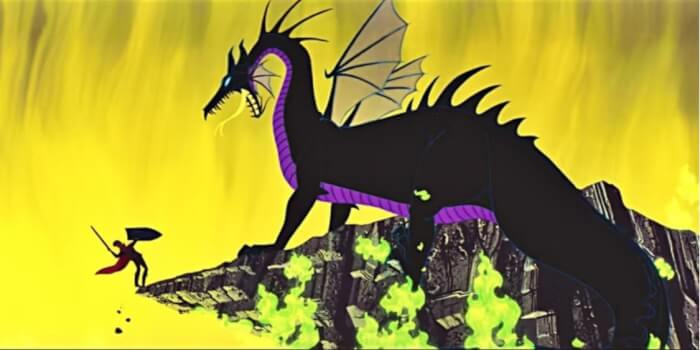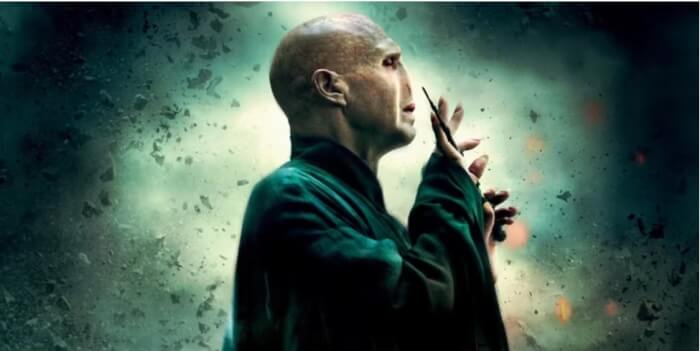Tough, cold, and powerful are three adjectives that define Voldemort and Maleficent. Voldemort is the embodiment of evil, he has killed many people and still doesn't have any feelings of guilt. His goal is to make sure he can never be killed. As a clever and strong leader, Voldemort rose to become the greatest danger in both the wizarding and Muggle worlds. Maleficent is a symbol of pure darkness. She is vicious, mysterious, cunning, and will stop at nothing to accomplish her terrible goals. She places herself above everyone, according to her most well-known quote ("You poor simple fools, thinking you could defeat me. ME!? The mistress of all evil?"). Maleficent is one of the most well-known and iconic Disney villains, with her dark, elegant aesthetic and ample amount of magical powers.
Now, do you think they have something in common? In this post, we will show you 10 similarities between Harry Potter's Voldemort and 1959's Maleficent. Scroll down to see more and enjoy!
#1 The child who would become their archenemy

In both of these stories, the antagonist unleashes their anger on the hero as a young child. Voldemort attempts to murder one-year-old Harry while Maleficent curses a newborn called Aurora.
They both share the trait of wanting to kill an innocent baby, which demonstrates the lengths they will go to destroy enemies or take revenge. Naturally, neither succeeds in their goal because neither hero can remove the deadly curses.
#2 Pay no attention to minions

Voldemort and Maleficent are two excellent examples of a supervillain trope that shows an apparent absence of compassion and regard for their followers.
Maleficent doesn't care for her followers. Because they lack common sense, she uses her magic to savagely punish them. Meanwhile, Voldemort's Death Eaters are undoubtedly terrible characters who collaborate with murder, torture, and genocide.
#3 Pets that are humanoid

Not only do the villains significantly rely on their animals' intelligence, but the audience is also given a softer side of them through their sincere connections with them. But showing more sympathy for their equally evil and cunning pets than for people shows that they lack empathy and are generally cut off from society.
#4 The waiting game

Intensity, sadism, and obsessiveness are features that distinguish long-term villains from other types. Both Maleficent and Voldemort are incapable of letting go, even though it would be better for their purposes if they both completely forgot about Harry Potter and Aurora and merely caused the disasters. Maleficent even transforms into a dragon to stop Phillip, ultimately killing her.
#5 Masters of magic

They both can fly (a very rare skill in the Wizarding World, and proof of Voldemort's being one of the most powerful wizards in fiction). As witnessed with Maleficent's staff and Voldemort's wand, they both use magical tools to enhance their abilities. With their almost limitless abilities, these two villains frighten everyone.
#6 Victims are hidden from them

Both antagonists are frustrated by these misdirections.
#7 Both of them come close to success

The moment Harry is taken back to Hogwarts so that all of his friends and allies may see his "dead" body is eerily similar to the moment the fairies discover Aurora's body. These iconic movie scenes create strong reactions from viewers, making them unforgettable and ensuring their survival.
#8 Green

Most frequently, in literary tradition, green is connected to envy. Maleficent probably feels jealous of all the love that is shown to Aurora and the Good Fairies. Due to his use of Harry's blood in his reincarnation spell, Voldemort is capable of executing Harry Potter because he is so envious of Harry's ability to withstand the Killing Curse.
#9 Cannot love

Harry stands out from every other character in the series, not only Voldemort, because of his immense capacity for natural and deep love. Aurora is a princess who doesn't care about being a royal. She is kind and lovely. That's why she received the big love from the three fairies, which eventually prevents disaster rather than her desire to be with Phillip, whom she loves and wants to be with.
#10 Importance of prophecies

The concept of a "Chosen One" plays a significant role in pieces like "Dune", "Macbeth", and "Star Wars". And prophecies are frequently used in fantasy literature. Voldemort responds to a prediction made about him, unlike Maleficent, who forges a prophecy (and then uses all of her power to make it come true). Ironically, his response makes it a self-fulfilling prophecy.